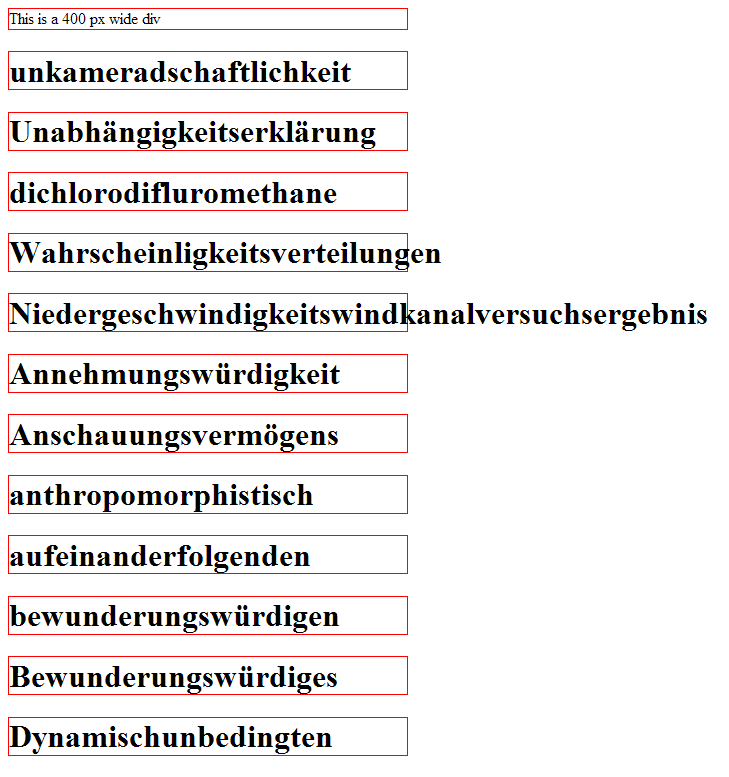- From: Loretta Guarino Reid <lorettaguarino@google.com>
- Date: Mon, 14 Apr 2008 12:47:55 -0700
- To: public-comments-WCAG20@w3.org
- Message-ID: <824e742c0804141247k4f75a043h928e52474838ec2a@mail.gmail.com>
---------- Forwarded message ---------- From: Liam McGee <liam@communis.co.uk> Date: Mon, Apr 14, 2008 at 9:29 AM Subject: Re: Your comments on WCAG 2.0 Last Call Working Draft of December, 2007 To: Loretta Guarino Reid <lorettaguarino@google.com> Cc: Shawn Henry <shawn@w3.org> Loretta Guarino Reid wrote: > > > Example: The WAI home page on Opera Mini(http://tinyurl.com/2lsef7) > > > > View the body text column. Would this fail the checkpoint as it stands > > because the list items 'Call for review: UAAG 2.0 Working Draft' requires > > horizontal scrolling (at 100%)? The concept of 'text is resized up to 200%' > > breaks down in any case on Opera Mini, iPhone Safari etc. > > > > I think this is a platform-specific checkpoint, and should be so noted. > > > <--snip--> > --------------------------------------------- > Response from Working Group: > --------------------------------------------- > It looks like you are only looking for additional information on the > first item dealing with reflow and screen width. > > The provision only says that text needs to reflow. And text is > defined as characters expressing something in human language. A URL > is not human language. As Tim Berners-Lee is often heard to say 'URLs > were never designed to be read by humans'. This only applies to text > like this paragraph is written in. The longest words in a language > would usually fit on half of a full size screen. We added the clause > "on a full screen window". In understanding we explain that this > means "should ensure that content meets this requirement on standard > desktop/laptop displays with the browser window maximized." > > If this is what you mean by platform (hardware) we agree with you. We > have therefore added the following definition . > > > on a full-screen window > on the most common sized desktop/laptop display with the > viewport maximized > Excellent, that is what I meant, and this is great. Does lead to the obvious next question, namely: 'How should the most common desktop/laptop display should be defined at any given point in time?' Could a developer such as me refer to a page that states, e.g. 'present recommendation is 800x600'. This position could then be periodically reviewed by the W3C, with a note as to when the next review will be. Given that conformance claims are now 'time-stamped', that should give a definable standard to work to. ACCEPT with caveat regarding specifying a particular measure, outlined above. Interesting point about urls not counting as text for the purposes of this checkpoint. As this could be an area of misunderstanding, is this noted anywhere in the understanding doc? "The longest words in a language would usually fit on half of a full size screen." I thought I would test this hypothesis on some non-frivolous technical German (or Finnish) words, such as Wahrscheinligkeitsverteilungen (probability distribution) and Niedergeschwindigkeitswindkanalversuchsergebnis (results from low-speed wind tunnel testing), including those that don't have a simple separation such as unkameradschaftlichkeit? Or that have a particular sense whent not separated such as Die Unabhängigkeitserklärung (the Declaration of Independence)? I ran some tests, assuming 600x800 is the screen size, therefore 400px is the target. I set each of these words in a standard unstyled H1, plus a few from Kant (courtesy of project Gutenberg). Oh, and dichlorofluromethane. I attach a png to show the results. In summary, Kant in German can pass this checkpoint, I think. Some technical German would fail it... at least until we get some intelligent text hyphenation built in to a generation of browsers. I guess these can just be separated into parts by the author. I have no idea how this works for other long-word languages that aren't germanic/finnish such as Maori, Hawaiian etc. It would be nice to have a note about how these long words should be treated in the understanding document. Am happy though, this is just a note. > We have also added to Understanding document: > > Since people generally keep their computers for several years, it is > best not to rely on the latest desktop/laptop display resolutions but > to consider the common desktop/laptop display resolutions over the > course of several years when making this evaluation. > Thanks again for the interest that you have taken in these guidelines. > Could we ask you to let us know whether or not you are satisfied with > this response by Wed, April 16? > Loretta, thanks so much for your patience and grace in responding to my feedback. I know how frustrating it must be! I think that WCAG 2 is looking great at the moment and look forward to it moving to the next stage. Kind regards Liam
Attachments
- image/png attachment: width-test.png

Received on Monday, 14 April 2008 19:48:46 UTC